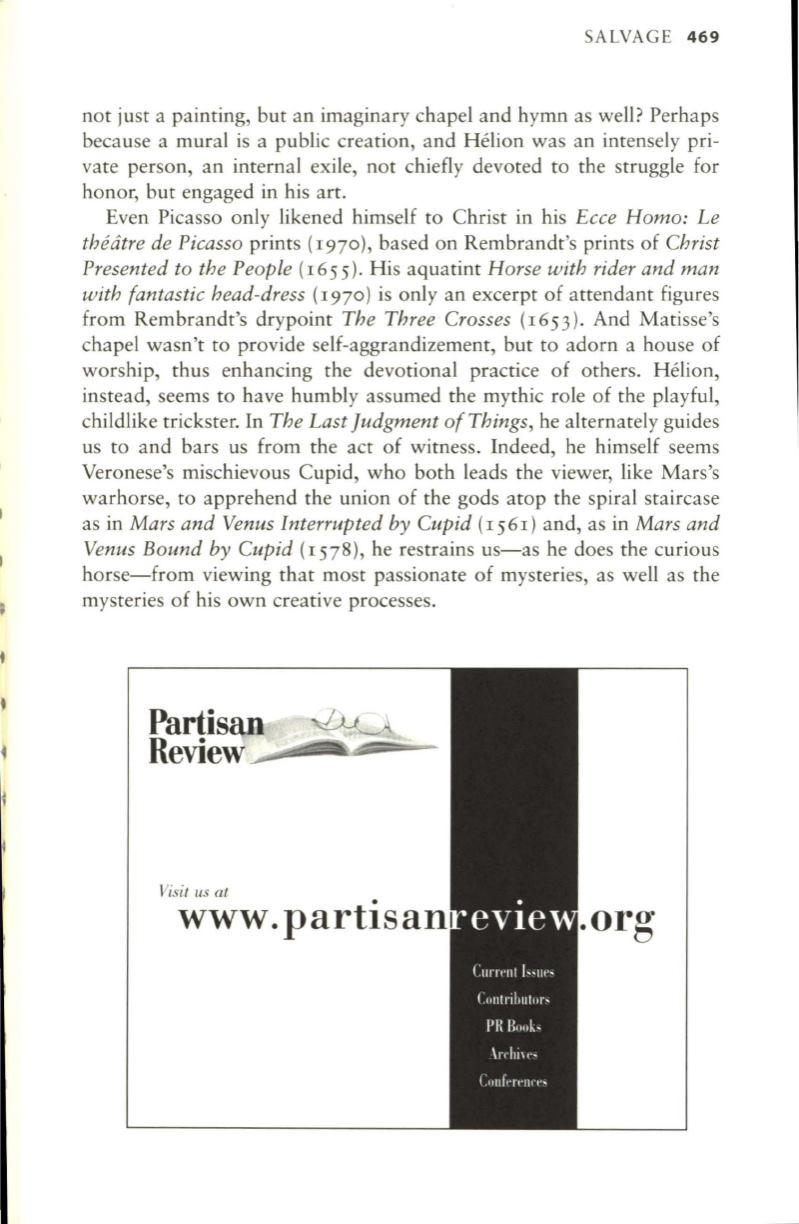
SALVAGE
469
not just a painting, but an imaginary chapel and hymn as well? Perhaps
because a mural is a public creation, and Helion was an intensely pri–
vate person, an internal exile, not chiefly devoted to the struggle for
honor, but engaged in his art.
Even Picasso only likened himself to Christ in his
Ecce Homo: Le
theatre de Picasso
prints
(I 970),
based on Rembrandt's prints of
Christ
Presented to the People
(165 5).
His aquatint
Horse with rider and man
with fantastic head-dress
(I 970)
is only an excerpt of attendant figures
from Rembrandt's drypoint
The Three Crosses
(1653).
And Matisse's
chapel wasn't to provide self-aggrandizement, but to adorn a house of
worship, thus enhancing the devotional practice of others. Helion,
instead, seems to have humbly assumed the mythic role of the playful,
childlike trickster.
In
The Last Judgment of Things,
he alternately guides
us to and bars us from the act of witness. Indeed, he himself seems
Veronese's mischievous Cupid, who both leads the viewer, like Mars's
warhorse, to apprehend the union of the gods atop the spiral staircase
as in
Mars and Venus Interrupted
by
Cupid
(1561)
and, as in
Mars and
Venus Bound
by
Cupid
(1578),
he restrains us-as he does the curious
horse-from viewing that most passionate of mysteries, as well as the
mysteries of his own creative processes.
Partis n
Review
~~~-=---
Visit us at
www.
partisan
.org


